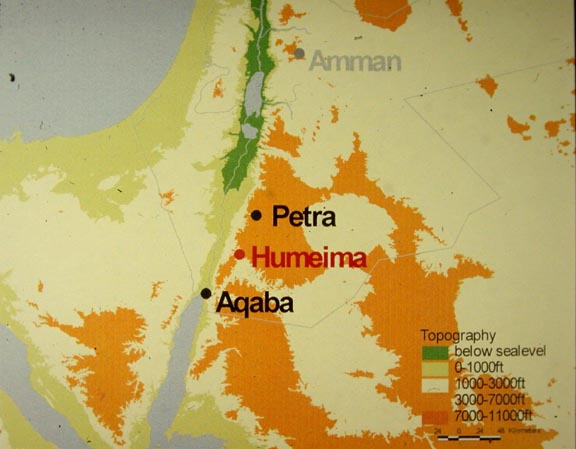|
|
Marcos posiblemente tiene origen en Marte. Significa "el que trabaja con el martillo".
|
|
|
|
|
Génesis 3:15: Y pondré enemistad entre ti y la mujer, y entre tu simiente y la simiente suya; ésta te herirá en la CABEZA, y tú le herirás en el calcañar.
LA HOZ TIENE FORMA DE LUNA CRECIENTE Y EL MARTILLO ES EL GRIAL-SINCRETISMO ISLAMICO-COMUNISTA- DIOS YHWH MUEVE LOS HILOS DEL MUNDO A SU CRITERIO Y PALADAR PARA MALDICION DE LOS EGOLATRAS QUE ODIAN AL SEÑOR
DOMINGO=PRIMER DIA
LUNES=SEGUNDO DIA
MARTES=TERCER DIA
Jael
De Wikipedia, la enciclopedia libre
Jael (en hebreo Ya'el, יעל, es el nombre hebreo para el íbice de Nubia) es un personaje del libro de los Jueces del Antiguo Testamento. Jael aparece como la heroína que mata a Sísara para salvar a Israel de las tropas de Jabín rey de Canaán. Jael era esposa de Heber el ceneo. (Juec. 5:23-27)
Esta es la parte de la Canción de Débora (Juec. 5:23-27) en la que se narra la muerte de Sísara:
- "Maldecid á Meroz, dijo el ángel de Jehová: Maldecid severamente á sus moradores, Porque no vinieron en socorro a Jehová, En socorro á Jehová contra los fuertes. Bendita sea entre las mujeres Jael, Mujer de Heber Cineo; Sobre las mujeres bendita sea en la tienda. El pidió agua, y dióle ella leche; En tazón de nobles le presentó manteca. Su mano tendió á la estaca, Y su diestra al mazo de trabajadores; Y majó á Sísara, hirió su cabeza, Llagó y atravesó sus sienes. Cayó encorvado entre sus pies, quedó tendido: Entre sus pies cayó encorvado; Donde se encorvó, allí cayó muerto.
Los expertos reconocen la Canción de Débora, basándose en evidencias lingüísticas, como una de las partes más antiguas de la Biblia.
MARCOS/MARTE/MARTILLO
JUAN MARCOS ES EL HIJO DE MAGDALENA Y CRISTO=HECHOS 12:12
Busqueda para JAEL
1. Génesis 4:18: Y a Enoc le nació Irad, e Irad engendró a Mehu JAEL, y Mehu JAEL engendró a Metusael, y Metusael engendró a Lamec.
2. Jueces 4:17: Y Sísara huyó a pie a la tienda de JAEL mujer de Heber ceneo; porque había paz entre Jabín rey de Hazor y la casa de Heber ceneo.
3. Jueces 4:18: Y saliendo JAEL a recibir a Sísara, le dijo: Ven, señor mío, ven a mí, no tengas temor. Y él vino a ella a la tienda, y ella le cubrió con una manta.
4. Jueces 4:21: Pero JAEL mujer de Heber tomó una estaca de la tienda, y poniendo un mazo en su mano, se le acercó calladamente y le metió la estaca por las sienes, y la enclavó en la tierra, pues él estaba cargado de sueño y cansado; y así murió.
5. Jueces 4:22: Y siguiendo Barac a Sísara, JAEL salió a recibirlo, y le dijo: Ven, y te mostraré al varón que tú buscas. Y él entró donde ella estaba, y he aquí Sísara yacía muerto con la estaca por la sien.
6. Jueces 5:6: En los días de Samgar hijo de Anat, En los días de JAEL, quedaron abandonados los caminos, Y los que andaban por las sendas se apartaban por senderos torcidos.
7. Jueces 5:24: Bendita sea entre las mujeres JAEL, Mujer de Heber ceneo; Sobre las mujeres bendita sea en la tienda.
TIENDA/CABAÑA/TABERNACULO/VID/VINO/GRIAL
|
|
|
|
|
| The Lunar Passion and the Daughters of Allah

At the Presentation of Mary, the budding Moon Goddess is introduced to the Moon-horn Priest.
In the Assumption of Mary, the Moon Goddess ascendant rides to Heaven on the crescent moon.
Titian and El Greco (Benard)
Back to Origins of Sin Part 2?
The Lunar Passion
The Jewish month begins with the new moon. The passover, falling mid-Nissan is always in the full moon. Hence the date of Easter is determined by the moon: "Easter Day is currently determined as the first Sunday after the full moon on or after March 21. The Eastern Orthodox churches, however, follow the Julian rather than the Gregorian calendar, so their celebration usually falls several weeks later than the Western Easter" (Grollier). There was a similar conflict in the time of Jesus between the Essenes, who followed the old Jubilees calendar and the Greek lunar calendar of Jerusalem. The Jubilees calendar had 364 days composed of 12 30 day months and four seasonal days. It was thus neither lunar nor solar, but similar to the Sumerian calendar and the 360 idols around the Ka'aba. Ironically, it was said that there was an eclipse of the sun in the crucifixion, something that happens only in the three dark days before the moon rises again from the dead! The body and blood of Christ is the bread of Tammuz and the wine of Dionysos. He is hung in his death in the tree of adonis, the cross of the four woods.
If need some help for Testking 646-230 and HP2-Z18 certification then get the latest vmware vcp study guide compiled by our certified experts to help you pass 642-617 in first attempt. You can also download cisco 640-864.
Just as there was seven levels to Innana's descent, there are said to be seven stations of the cross: the scourging, the delivery, the crown and reed sceptre, the spitting and beating, the removing of the robe, the bearing of the cross, the myrrh and vinegar. The tribulation of Mary is also portrayed as a seven act play: The Annunciation, the Nativity, the Transfiguration, the Passion, the Resurrection, the Ascention, the Coronation of Mary. John the Baptist was similarly beheaded after Salome danced the dance of the Seven Veils (the descent) for Herod's guests.
There is an uncanny link between this episode and the Nabataeans who populated Edom across the Jordan. John the Baptist was beheaded at the behest of Herodias who was accused by John of adultery, because she was the wife of Herod's brother Philip. Herod was stated by Josephus to have come from an Idumaean (Edomian) line. Herod's previous wife, the daughter of Aretas IV King of Nabatea (Edom) had to escape for her life and a series of hostilites resulted between the states.
Jesus is said to have come in fulfillment of the following prophecy: Isiah 63:1 "Who is this that cometh from Edom, with dyed garments from Bozrah? this that is glorious in his apparel, travelling in the greatness of his strength? I that speak in righteousness, mighty to save. ...I have trodden the winepress alone; and of the people there was none with me: for I will tread them in mine anger, and trample them in my fury; and their blood shall be sprinkled upon my garments, and I will stain all my raiment. For the day of vengeance is in mine heart, and the year of my redeemed is come." This prophecy is alternatively transferred to the second coming in Revelation 19.
While this could be interpreted as Yahweh wreaking venegance on the Edomites for celebrating the fall of Jerusalem, this is nevertheless a stunningly Dionysian passage and can refer to none other than Duchares of Edom. It is significant that Jesus performed the Dionysian miracle at the marriage at Cana - the water into wine - at Mary's request a full year before he was baptised by John in the Jordan. One manifestation of the Nabataean Aphrodite al-Uzza was as a dolphin- crested sea goddess - Mari. Dionysus turned pirates into dolphins, Jesus was a fisher of men. St. Jerome stated that Jesus was born in the grotto of Aphrodite at Bethlehem. He is the Christ of the three-fold Mary, born of Mary, anointed both on his feet by Mary of Bethany and on his head to his doom by Mary Magdalene 'out of whom were cast seven devils'. Likewise the Marys, along with Salome, attended his burial.
The passing of the virgin Mary was supposed to have occurred in Ephesus on 13 th August the day of the festival of the Moon Goddess Artemis, accompanied by all 12 apostles. Her Assumption to heaven is celebrated two days later. Mary is subsequently portrayed as either standing or riding on the moon. We thus see that for all the blood shed, the Jewish priests gave away the moon to the goddess without realizing it, repeating the mortal mistake of Sin while trying to undo that of Adam! Mary likewise became trapped inside he own descent.
The merging into Jewish vision of the Zoroastrian opposition between of dark and light and its apocalypse of cosmic renovation thus drove the Messianic prophesy towards a cosmic form. Sacrificial atonement exploded from a cyclic renewal into a single culmination - the crucifixion of the Christ of Mary-Anath as sacred king, to undo the works of Eve and bring in the Age of Immortality of the Father. Although the Jews had rejected the Queen of Heaven, the age old concepts of tabu, attonement and sacrifice remained true, as prophecied in the paslms and the prophets. Moses had himself suffered the same fate. By performing the pagan sacrifical rite as a consummation of Yahwistic and Zoroastrian apocalyptic thought, Christianity became a global religion, striking a universal mortal chord, but at severe cost to the Queen of Heaven and to the spiritual integrity of womankind.
'Ilumquh of the Sabeans
Sheba is the Hebrew spelling of Saba, the name of an ancient southwest Arabian kingdom roughly corresponding to the modern territory of Yemen, originally settled by Semites from western or central Arabia during the middle of the 2nd millennium BC. Excavations at Ma'rib, its capital, during the 20th century have revealed an imposing temple to the moon god.

Temple of 'Ilumquh at Marib Yemen, Sabean Moon Bull,
Incense Holder Aksum, Moon and Orb of Venus Sabean wall frieze (Doe).
"The South Arabians before Islam were polytheists and revered a large number of deities. Most of these were astral in concept but the significance of only a few is known. It was essentially a planetary system in which the moon as a masculine deity prevailed. This, combined with the use of a star calendar by the agriculturists of certain parts, particularly in the Hadramaut, indicates that there was an early reverence for the night sky. Amongst the South Arabians the worship of the moon continued, and it is almost certain that their religious calendar was also lunar and that their years were calculated by the position of the moon. The national god of each of the kingdoms or states was the Moon-god known by various names: 'Ilumquh by the Sabaeans, 'Amm and 'Anbay by the Qatabanians, Wadd (love) by the Minaeans, and Sin by the Hadramis". The term 'God is Love' is characteristic of Wadd (Briffault 3/85). 'the Merciful' ascribed to Allah is also South Arabian (Pritchard).
The sun-goddess was the moon's consort; she was perhaps best known in South Arabia as Dhat Hamym, 'she who sends forth strong rays of benevolence'. Another dominant deity was the male god known as Athtar corresponding to Phoenician Astarte (Doe 25). Pritchard (61) claims their pantheon included the the moon god Sin etc., Shams (Shamash) and Athtar or Astarte as in the Semitic trinity, however it would appear that the sun was female as the Canaanite Shapash who figures in Ugarit myth alongside Athtar (Driver 110).
The earliest temple known is the Mahram Bilquis or Harem of the Queen of Sheba, previously called the Awwam the temple of the Moon God 'Ilumquh which dates from around 700 BC, although its lower levels may be substantially older. Sabean moon worship extended through a long period of time to around 400 AD when it was overtaken be rescendent Judaism and Christianity around a century before Muhammad.
From the 4th century AD, Christian bishops made notable conversions of the Kings of Himyar , Aksum and of Ethiopia generally. Narjan, an ancient pagan pilgrimage spot in a fertile valley on the trade route became a Christian stronghold. Medina became a centre of Jewish influence. Christianity and Judaism entered into competition in Arabia, encouraged by the Persians. In 522, King Dhu Nawas Yusaf "Lord of Curls" became the last elected Himyar king, descendent of a Jewish hero, who made war on the Christians. He offered the citizens of Naryan the choice of Jewry or death. When they refused he burned them all in a great trench. Afterwards Narjan as named "the trench". In response the Ethiopians overcame them and Abraha made San'a a Christian pilgrimage point which rivalled Mecca. This led to an expeditionary force of Christians to try to destroy the Ka'aba. In turn Persia invaded and for a short time the country became a Persian satrapy. This confused situation laid the seeds for the emergence of Islam.
Bilqis the Sun-worshipper of Islam
Bilquis was the Queen of the Sabeans in Solomons time. Pre-Islamic poetry describes Solomon as a king of universal kingdom of men, djinn and winds etc. nine angels stand before him. He built the castle al-Ablaq near Taima.
"The great civilization of South Arabia was little known to the Arabs of Muhammad's time [although] any of the Arab tribes of Muhammad's day still had a tradition that they had lived in South Arabia before taking to the desert when the old civilization declined." Some tribes retained a memory of being settled there before conditions worsened, apparently connected with the Marib dam bursting and a return to nomadic life. Restorations were know to have been carried out in 450 and 542 which puts a final date on the demise (Pritchard 1974 88).
Sura 34:15 states: "Certainly there was a sign for Saba in their abode; two gardens on the right and the left; eat of the sustenance of your Lord and give thanks to Him: a good land and a Forgiving Lord! But they turned aside, so We sent upon them a torrent of which the rush could not be withstood, and in place of their two gardens We gave to them two gardens yielding bitter fruit and (growing) tamarisk and a few lote-trees."
Sura 27:15-44 relates many of the episodes already found for example in the Targum Sheni, a further indication of the familiarity Muhammad had with details of Jewish literature outside the Pentateuch. Rather than Bilqis being portrayed as a demon, Solomon is portrayed as a great man of God and master of the Djinn to whom Bilquis submits in acknowledgement of al-Llah. The story of the Hoopoe is told. The people of Sheba are said to be sun-worshippers. Her throne is disguised and placed before her as a test. She says "It is like it' evasively. As she walks on to the palace: 44 "She though it a pool and uncovered her legs. Solomon said 'It is a place paved with glass.' She sadi 'I have wronged myself to God, Lord of the worlds, with Solomon I make submission.' "
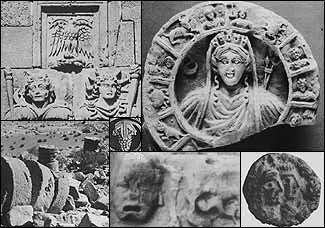
Moon and Sun deities surmounted by the Eagle. Al-Uzza as Moon Goddess commands the Zodiac surmounted by the moon and carrying a moon staff. The temple of Manatu at Petra.
Dionysian tragic mask with dolphins. Grape freeze (centre). Aretas IV and Shaqilat II (Glueck).
Al-Lat, al-Uzza and Duchares: the Deities of Nabatea
A second prominent Arab culture had sprung up from Southern Sinai around 600 BC and from around 400 BC in the land of the Edomites in Jordan. The Nabateans had a close relationship with the Edomites as they each claim a female line of descent from Ishmael, through Bashemath one of the three wives of Esau and her sister Nabaioth respectively (Browning 32), conditions favourable to integration. This also gave the Edomites descent from Isaac through Esau. The son of Esau and Bashemath was Ruel the Midianite father in Law of Moses.
|
|
|
|
|
La referencia a Pedro/Piedra en Mateo 16:18 tambien es una referencia a PETRA/EDOM en un contexto a la CIUDAD DE LA ROSA/LUNA CRECIENTE.
El Vaticano en su diseño en FUNCION A LAS PLEYADES/TAURO es un OBVIO NEXO CON LA LUNA CRECIENTE ya que los cuernos del TORO tambien son una referencia a la MISMA.
Haz hecho público que te gusta. Deshacer
www.mitos.co/lugares-interesantes/110-petraEn caché
Haz hecho público que te gusta. Deshacer
visitandoelmundo.org/petra-ciudad-con-historia/En caché
Haz hecho público que te gusta. Deshacer
tiempolibreyturismo.blogspot.com/.../petra-en-jordania.html - EspañaEn caché
Haz hecho público que te gusta. Deshacer
mogolik.mforos.com/459625/3828152-donde-queda/En caché
Haz hecho público que te gusta. Deshacer7 entradas - 1 autor - 10 Nov 2005
... libro del doc jones lo localizaba, eraen el valle de la luna creciente. ... Es Petra . Capital de los nabateos (s. vi a. J. C.) Está situada entre el ...
Haz hecho público que te gusta. Deshacer
www.pagina12.com.ar/diario/suplementos/.../9-1501-2009-03-15.ht...
Haz hecho público que te gusta. Deshacer
www.joaconde.net/viajes/jordania/petra.htmEn caché
Haz hecho público que te gusta. Deshacer
|
|
|
|
|
PLANETA MARTE Y SU NEXO CON ISIS, EL TORO Y LA LUNA CRECIENTE-C-SAR INCLUSO EN EL CONTEXTO A C/LUNA CRECIENTE Y SAR/PRINCIPE TAMBIEN ESTA EN FUNCION A LA LUNA CRECIENTE
|
|
|
|
|
YHWH CODIFICO EN EL VATICANO LA LLAVE DE DAVID EN FUNCION A SIRIO-LA PIRAMIDE DE LA PLAZA DE SAN PEDRO ES DICHA LLAVE-EN UN CONTEXTO A QUE ROMA TIENE 7 COLINAS/PLEYADES/TAURO/LUNA CRECIENTE YA QUE LOS CUERNOS DEL TORO TAMBIEN SON UN SIMBOLO DE DICHA LUNA LA PIRAMIDE/LLAVE ES EL GRIAL-DICHO OBELISCO ESTA EN EL PARALELO 41 Y TIENE 41 METROS-¿QUE NEXO HAY CON EL 13/10 EN EL CONTEXTO A QUE DICHO DIA NOS CAE EN LA SEMANA NUMERO 41?
16:19 Y a ti te daré las llaves del reino de los cielos; y todo lo que atares en la tierra será atado en los cielos; y todo lo que desatares en la tierra será desatado en los cielos.
AMIGO NO PROMUEVA EL ROBO NI SE DEJE ROBAR
ROSARIO EN EL PARALELO 33
| key in Simple Gematria Equals: 41 |
( |
k
11 |
e
5 |
y
25 |
) |
| key in Simple Gematria Equals: 41 |
( |
k
11 |
e
5 |
y
25 |
) |
UNITED STATES OF AMERICA
| usa in Simple Gematria Equals: 41 |
( |
u
21 |
s
19 |
a
1 |
) |
| usa in Simple Gematria Equals: 41 |
( |
u
21 |
s
19 |
a
1 |
) |
Canis Major loyally follows its mythical master, Orion, across the southern skies of winter.
The brightest star in Canis Major also is the brightest in the entire night sky — brilliant Sirius, which is just 8.6 light-years away. That's only twice as far as our closest stellar neighbor. Because it is the brightest star of the Great Dog, Sirius is known as the Dog Star. Its first appearance in the dawn sky in August heralds the "dog days" of summer.
Sirius is actually a double star. The star that we see as Sirius is about 20 times brighter than the Sun. It is also hotter and more massive than the Sun. Its companion is known as Sirius B, and is nicknamed The Pup. It is a white dwarf -- the hot, dense core of a star that was once like Sirius itself. At the end of its life, the star blew its outer layers into space, leaving only the core. Sirius B is as massive as the Sun but less than one percent as bright. It shines simply because it's still hot.
Canis Major's second-brightest star is Adhara. It is well below Sirius, in one of the dog's legs. It is about 425 light-years away. It emits about a thousand times more visible light than Sirius does, so if it were moved to the same distance as Sirius, it would look about 200 times brighter than Sirius does.
Because the surface of Adhara is extremely hot, the star emits more ultraviolet energy than visible light. If our eyes were tuned to the ultraviolet, Adhara would outshine every other star in the night sky.
One interesting sight in Canis Major is a star cluster known as M41, which is about 2,300 light-years away. It's visible to the unaided eye as a faint smudge of light below Sirius. Binoculars or a small telescope reveal a swarm of several dozen stars.

|
|
La ciudad del vaticano es una ciudad-estado que se encuentra dentro de Roma. Su población se calcula en menos de 1.000 habitantes y su extensión en 0.439 Km2.
Allí se ubica la santa sede de la Iglesia Católica, máxima autoridad y gobierno con el papa a la cabeza. La santa sede posee personalidad jurídica propia y mantiene relaciones diplomáticas con los demás estados. En el interior del Vaticano encontramos la basílica de San Pedro, la tumba de San Pedro y el museo Vaticano.
Coordenadas: 41 54 07N, 12 27 25E
|
|
The 5 above articles in my other older blog each also contains some further extrapolation & elucidation of the multiple synchronistic themes embedded within the riddle, thus anyone interested in these things is strongly advised to read them as well in order to truly get out of the mental cage and think out of the box as required. Now let’s go back to the “KEY & SQUARE” at the St Peter’s Square (Piazza) and peer somewhat deeper into the total Obelisk height of 41 meters as a crucial clue:
41 METERS HIGH
41 DEGREE PARALLEL
Exact latitude of the Obelisk at the Vatican is: 41.90 N
|
MAS ENLACES
|
|
|
|
|
No es sorprendente que haya rastros del antiguo mito de la diosa diseminados por cada religión del mundo, y que sea recordado o recreado de nuevo para analizar este sueño particular de la vida en la tierra. Siempre que aparezca una composición de piedras en forma circular, espiral o serpentina, como en Stonehenge o Avebury, o dondequiera que se haya señalado una cueva o una cripta como lugar de revelación de o de nacimiento, ahí está la tradición de la diosa madre, quien durante al menos 25.000 años fue concebida como origen y como destino: la que da la vida y la morada de los muertos; la que transforma la vida que sacó de sí misma y que tomó de nuevo para sí, en un ciclo temporal tan perpetuo y continuo como la luna.
De las galerías laberínticas de las cuevas paleolíticas al laberinto trazado en el suelo de la catedral de Chartres, hay una distancia de veinticinco milenios en tiempo lineal, pero una identidad de imágenes simbólicas que anula el paso de los siglos. Las aves volando del lugar de enterramiento de Mal’ta (Siberia) conectan con la diosa pájaro del Neolítico, al igual que con las palomas pertenecientes a la diosa sumeria Inanna, a la Isis egipcia, a la Afrodita griega, y con la paloma del Espíritu santo. El ave en lo alto de un báculo de chamán en Lascaux (figura 1) prefigura la paloma del arca de Noé, y también la que se acurruca en el regazo de la diosa griega Perséfone en el siglo V a. C. (figura 2), o el pájaro posado sobre el cetro de María del siglo XII d. C. (figura 3) y el cuadro de la paloma de la Anunciación, del siglo V (figura 4).
La serpiente de la placa de Mal’ta (figura 5) reaparece con el árbol de la vida sumerio, que se halla detrás de la diosa (figura 6), y más tarde se dirige a Eva desde el árbol del conocimiento del bien y del mal (figura 7). Serpientes entrelazadas forman el jeroglífico del dios sumerio Ningizzida, al igual que la espiral del caduceo del dios griego Hermes, guía de las almas (figura 8), y se enrosca una serpiente también al báculo de Esculapio, dios griego de la curación.
Desde la danza de los chamanes en Les Trois Frères, pasando por el baile del laberinto de Creta, hasta el baile circular de los discípulos de Cristo en los Evangelios gnósticos, hay una línea de transmisión continua con implicaciones mucho más amplias para nuestra concepción de la psique humana de lo que se ha reconocido. La luna creciente en la mano de la diosa de Laussel (figura 9) señala hacia la luna creciente de la cabeza de la babilónica Astarté del 200 a.C. (figura 10) y, de nuevo, a la luna creciente que yace bajo los pies de María (figura 11). Desde el santuario cueva paleolítico con los animales pintados en las paredes hasta el establo de Belén con el buey y el asno, desde la antigua diosa madre hasta la virgen María, corre un modelo de asociación antiguo y extraordinario que puede trazarse sólo mediante el conocimiento de la imagen simbólica.
Si abrigamos la idea de Jung sobre el ser humano de dos millones de años de antigüedad –mujer y hombre- que está presente en cada uno de nosotros, entonces la visión paleolítica aún nos es accesible en la actualidad. Pues, como escribió Jung: “Nada de cuanto pertenece a la psique, o es parte de ella, se pierde nunca. Para vivir plenamente tenemos que inclinarnos, tender las manos y traer de nuevo a la vida los niveles más profundos de la psique a partir de los cuales ha evolucionado nuestra consciencia presente”.
Extraído de "El mito de la diosa" de Anne Baring y Jules Cashford. Ediciones Siruela. Fondo de Cultura Económica. 2005.
 1. Detalle de pájaro del báculo de un chamán (c. 15.000-12.000 a.C.) Cueva de Lascaux, Dordoña, Francia) 2. Perséfone con paloma c. 450 a.C. Locri, Italia) 3. Detalle de un pájaro sobre el cetro de María (siglo XII) 4. Paloma de la anunciación (dibujo de un detalle de El cordero místico, del retablo de Gante, Hubert y Jan Van Eyck, 1432) 1. Detalle de pájaro del báculo de un chamán (c. 15.000-12.000 a.C.) Cueva de Lascaux, Dordoña, Francia) 2. Perséfone con paloma c. 450 a.C. Locri, Italia) 3. Detalle de un pájaro sobre el cetro de María (siglo XII) 4. Paloma de la anunciación (dibujo de un detalle de El cordero místico, del retablo de Gante, Hubert y Jan Van Eyck, 1432)
 5. Serpientes en una placa (c. 16.000-13.000 a.C. Mal'ta, Siberia) 6. Diosa y dios con cuernos, junto a un árbol y una serpiente (sello cilíndrico sumerio, c.2500 a.C.) 5. Serpientes en una placa (c. 16.000-13.000 a.C. Mal'ta, Siberia) 6. Diosa y dios con cuernos, junto a un árbol y una serpiente (sello cilíndrico sumerio, c.2500 a.C.)
 7. Adán, Eva y la Serpiente (grabado español en madera, 976) 8. Caduceo (grabado suizo en madera, 1615) 7. Adán, Eva y la Serpiente (grabado español en madera, 976) 8. Caduceo (grabado suizo en madera, 1615)
 9. Diosa de Laussel (22.000-18.000 a.C.) 10. Astarté con luna crecient sobre su cabeza (siglo II a.C., Babilonia) 9. Diosa de Laussel (22.000-18.000 a.C.) 10. Astarté con luna crecient sobre su cabeza (siglo II a.C., Babilonia)
 11. Virgen María con luna bajo sus pies (La glorificación de la Virgen, Geertgen tot St Jans, 1490) 11. Virgen María con luna bajo sus pies (La glorificación de la Virgen, Geertgen tot St Jans, 1490)
http://es-es.facebook.com/notes/el-mito-de-la-diosa/los-rastros-del-antiguo-mito-de-la-diosa-diseminados-por-cada-religi%C3%B3n-del-mundo/353287624703013?ref=nf
|
|
|
|
|
C-SAR (NEXO CON LA LUNA CRECIENTE C=LUNA CRECIENTE, SAR=PRINCIPE
The Babylonian "Sar" is doubtlessly related to the Hebrew word [*H8269] of the same spelling, meaning; "prince, captain, chief, ruler, leader, head." The word has retained this meaning even in modern usage, as in the Tsar of all the Russias. As a testimony to what may have been based on the first human language, "Aesar" is a word for "God" in both, Icelandic and Irish, "Osar" in Egypt like "Osiris" was the prince. The English word "sir" and the Roman "Ceasars" are also traceable to this root. It is used in Daniel 10:13 & 20, referring the archangel Michael who dispatched the fallen angel (Daimon) who opposed the messenger angel that God sent to answer Daniel's prayer. In Isaiah 9:6, one of the great prophecies of the promised seed, it is used of the Messiah as Sar-Shalom; the Prince of Peace, the one who brings peace to all Creation [Eph. 2:11-18]. It is additionally used of Prince Moses in Exodus 2:16.
According to Hislop, The Chaldean version of this word; "Zer," meaning "to encompass" gives us not only the English basis for: "Zero signified by a circle among the Chaldeans," but also Zero; "the seed." Further, it relates to the Hebrew word zera [*H2233] used in reference to the promised seed in Genesis 3:15. To this end the Chaldean word for the "woman's promised seed" was "Zero-ashta," that also formed the basis of the name Zoroaster. We should note that in the writings of Zoroastrianism in the Zend-Avesta, the predicted return of Zoroaster as a savior who would renew all existence in preparation for the Last Judgment, was prophesied. These references to the woman's promised seed point directly to the general sign of the Celestial Prelude. Hislop also notes:
"In almost all nations, not only was a great god known under the name of Zero or Zer; the seed, and a great goddess under the name of Ashta or Ishta; the woman, but the great god Zero is frequently characterized by some epithet which implies that he is The only One." 3
This evidence provides a strong basis for a direct correlation to the decan Coma, the seed who was the desired of the nations, especially when we view the supernova in this child's head [pictured below from the Dendera zodiac] who was the promised seed, during the general sign of the Celestial Prelude. The implication that the promised seed of the woman would be the only one, speaks to the truth that Christ is the Alpha and Omega, or the first and last way God made available for the redemption of Mankind. Hislop goes on to say: "As he who by the Chaldeans was regarded as the great Seed was looked upon as the Sun incarnate, and as the emblem of the Sun was a circle, the hieroglyphic relation between zero; "the circle," and zero; "the seed" was easily established."4
|
|
|
|
|
| Una búsqueda en Google usando el criterio "banderas islámicas" da el resultado siguiente: |
 |
|
|
|
|
|
¿De dónde vienen los árabes?
Como todos los demás árabes, la tribu de Mahoma, la tribu Quraysh, era descendiente de Abraham en virtud a ser descendientes de Hagar, la criada (empleada) de Sara, quien es su verdadera y legitima esposa. Este Hijo ilegítimo de Abraham con Hagar llamado Ismael es el padre de todos los árabes. Ver Génesis 16 para más detalles.
| Abraham es el padre tanto de los hebreos así como de árabes, por lo tanto Arabes y Hebreos (judios) son hermanastros lo quieran o no es asi y nadie puede cambiar la historia... |
Los miembros del Islam se identifican a sí mismos como "islámicos", que significa "aquellos que se someten" a Allah, y ésta no es más que una religión que equivocadamente se ha relacionado con el Dios Abraham, Isaac y Jacob, Yáhwe. El Islam fue planificado 600 años despues de Cristo como un intento de adorar solamente a un "dios único" o "jefe" de la tribu de Mahoma, el dios luna.
 Esta es la razón por la que usted puede ver que una gran cantidad de las banderas de países islámicos, todas las cimas de sus mezquitas, y el símbolo oficial de la religión islámica es… una media luna ... Esta es la razón por la que usted puede ver que una gran cantidad de las banderas de países islámicos, todas las cimas de sus mezquitas, y el símbolo oficial de la religión islámica es… una media luna ...
Esta misma luna creciente usada hoy por la religión islámica es el mismo símbolo usado por los Sumerios, que adoraban al antiguo "dios luna".
Los arqueólogos han encontrado envases y vasijas de cerámica usada por los antiguos Sumerios en sus templos zigurates en Ur y en Babilonia, que eran ciudades importantes del Imperio Persa, donde también se desarrolló el Islam moderno.
Hace cuatro mil años había una leyenda que decía que existía una nave marina en la que el dios luna se "paseaba por el cielo."
¿Puede notar alguna relación entre el Islam y la luna?
Pero los árabes no eran los únicos en considerar a la luna como un dios. Muchos de los pueblos que rodeaban a Israel, mucho antes del nacimiento de Jesús, siglos antes del nacimiento de Mahoma, allá en los primeros años de la formación del Pueblo de Dios, el Pueblo de Israel, ya Dios enojado con Israel y les advertía que tenían que cuidarse de no dejarse contagiar o influenciar con la práctica abominable de sus vecinos que adoraban al Sol y a la Luna.
"No sea que alces tus ojos al cielo, y viendo el sol, la luna, las estrellas y todo el ejército del cielo, no te dejes seducir, no te inclines ante ellos y no los sirvas, porque Jehová, tu Dios, los ha concedido a todos los pueblos debajo de todos los cielos." Deuteronomio 4:19
"Reedificó los lugares altos que su padre Ezequías había derribado, levantó altares a Baal e hizo una imagen de Asera, como había hecho Acab, rey de Israel. Adoró además a todo el ejército de los cielos, al sol y a la luna, y rindió culto a aquellas cosas. Asimismo edificó altares en la casa de Jehová, de la que Jehová había dicho: «En Jerusalén pondré mi nombre». Y edificó altares para todo el ejército de los cielos en los dos atrios de la casa de Jehová." 2 Reyes 21:3-5
 Una gran mayoría de los templos islámicos tienen una inmensa cúpula o domo pintado de amarillo-luna, tratando de reflejar la relación intrínseca existente entre el dios de la tribu de Mahoma, de su esposa, de su padre, de sus tíos, etc. y el Islam, la religión fundada por él. Una gran mayoría de los templos islámicos tienen una inmensa cúpula o domo pintado de amarillo-luna, tratando de reflejar la relación intrínseca existente entre el dios de la tribu de Mahoma, de su esposa, de su padre, de sus tíos, etc. y el Islam, la religión fundada por él.
|
|
|
|
|
EL ARCO IRIS TIENE FORMA DE ARCO Y LUNA CRECIENTE-RELACION CON EL PACTO DE NOE
El Mes de Kislev
De acuerdo con el Sefer Ietzirá, cada mes del año judío tiene una letra del alfabeto hebreo, un signo del zodíaco, una de las doce tribus de Israel, un sentido, y un órgano controlador del cuerpo que le corresponde.
Kislev es el noveno de los doce meses del calendario judío.
Es el mes de Januca, la única festividad que combina dos meses, comienza en el mes de kislev y continúa y concluye en tevet.
Su nombre deriva de la palabra hebrea "seguridad" y "confianza". Hay dos estados de fé, uno activo y otro pasivo, que se manifiestan en el mes de kislev (bitajón, confianza). El milagro de jánuca refleja la confianza activa de los Jashmonaim (Macabim) para levantarse y luchar contra el imperio helenista y su cultura. El sentido de "dormir" ligado a kislev refleja la fé pasiva de que la providencia de Di-s siempre proteje a Israel.
En la tradición jasídica, el día 19 de kislev es conocido como "el Año Nuevo del Jasidut", día de la liberación de la prisión y redención del rebe Shneur Zalman, autor del Tania, texto clásico de jasidut, discípulo del Maguid de Mezerich, el sucesor del Baal Shem Tov. Fue encarcelado por diseminar los más profundos misterios de la Torá y su liberación implica que es a través del canal espiritual de este día que se baja a este mundo la sabiduría interna del jasidut y el poder de integrar esta sabiduría a nuestra vida diaria. La base del sendero del jasidut es la confianza y la fé en la omnipresencia de Di-s y la omnipotencia de Su providencia Divina.
 Color: azul violeta Color: azul violeta
 Letra: samaj. Letra: samaj.
Samaj significa "sostener" o "apoyar". La experiencia de sentirse apoyado corresponde a la fé y la confianza en la providencia Divina asociada con el mes de kislev como se describió arriba. Así lo encontramos expresado en los Salmos: "Di-s sostiene (somej) a todos los caídos y endereza a todos los encorvados"; "Aún cuando caiga no se lo dejará caer hasta el suelo, porque Di-s lo sostiene (ismaj) en sus manos".
La forma de la samaj es un círculo que representa la omnipresencia de Di-s y Su providencia que abarca o rodea . Según explica la cabalá y el jasidut el "gran círculo" de la luz Infinita de Di-s refleja Su "brazo derecho" que abraza (y soporta, desde abajo) la realidad toda con enorme e infinito amor, como está dicho: "Y desde abajo, los brazos del universo".
 Mazal: "keshet", (sagitario, el arco) Mazal: "keshet", (sagitario, el arco)
El arco de kislev es el de los Macabim. Simboliza su confianza activa en Di-s para luchar contra el imperio y la cultura que entonces regían la tierra.
Aunque los Jashmonaim eran de la tribu de los Sacerdotes de Israel, el "arte" de la arquería es atribuido en la Biblia a la tribu de Benjamín en particular, la tribu del mes de kislev.
Los Cohanim (y Leviim) no son considerados como una de la tribus correspondientes a cada uno de los meses del año (de acuerdo con el Arizal). Como una manifestación "todo abarcadora" del alma judía, los Cohanim contienen y reflejan la fuente espiritual de cada una de las tribus. Esto es así especialmente con respecto a la tribu de Benjamín, ya que en su parte de la tierra de Israel estaba el Templo sagrado donde los Cohanim hacían su servicio. Por eso la relación entre estas dos tribus es similar a la del alma y el cuerpo. Los Cohanim libraron la guerra santa corporizada por el arco de Benjamín. El arco de guerra de kislev es realmente proyectado ("disparado") desde el arco (el arco iris, que en hebreo corresponden a la misma palabra keshet) de paz (entre Di-s y la Creación) del mes anterior Jeshvan, como se explicó antes). Los dos arcos (semicírculos) se unen para formar el círculo completo de la samaj de kislev.
 Tribu: Benjamín Tribu: Benjamín
Como se mencionó, esta es la tribu más dotada en el arte del arco. En su porción está el Templo Sagrado de Jerusalem, como consta en la bendición de Moisés a esta tribu en el final de la Torá (que sigue directamente a la de las tribus de Cohen y Levi, de acuerdo con la relación que hay entre ellos según se explicó antes) y que es una profecía de la guerra de los Macabiim contra los griegos: "Para Benjamín dijo: el amado de Di-s, El morará seguro sobre él, El sobrevolará sobre él todo el día, y reposará entre sus hombros" (Deuteronomio 33:12). Vemos aquí explícitamente que Benjamín simboliza seguridad y descanso, el sentido del mes de kislev.
De todas la tribus de Israel, Benjamín fue el único que nació en la tierra de Israel, el lugar donde podemos experimentar en mayor medida la Divina providencia y la omnipresencia absoluta de Di-s. En la palabras del Zohar: "No hay ningún lugar libre de El".
 Sentido: dormir (sheiná). Sentido: dormir (sheiná).
El sentido del sueño es la tranquilidad y el reposo que viene de la confianza y la seguridad en Di-s y Su Divina providencia, por eso encontramos en la bendición del final del libro de Levítico (26:5-6): "Y morarás seguro en tu tierra. Y daré paz en la tierra, y podrás acostarte sin temor…".
Como la palabra "sentido" (jush) es semejante a "rápido" (jish), el sentido de dormir implica la capacidad de dormir bien pero rápido (como está dicho de los grandes tzadikim quienes necesitaban muy porcas horas de sueño por día).
El verdadero talento de Benjamín de disparar directo a su objetivo depende de una suma tranquilidad interior del espíritu. Dispara y acierta casi dormido, Di-s lleva su flecha a su destino. Una persona tranquila tiene muy poca fricción y tensión interior. Este sentido implica la habilidad de liberar el stress, confiando en el sustento de Di-s.
El sentido de dormir también trae consigo el de soñar. De acuerdo con nuestra fé en la Divina providencia, manifestada especialmente en relación con la conección entre las porciones semanales de la Torá y el ciclo anual de los meses y sus eventos, todos los sueños de la Torá están contenidos en las porciones que se leen durante el mes de kislev.
Cuando se posee una confianza absoluta en Di-s, se sueñan buenos sueños sobre el futuro. Los buenos sueños en la noche reflejan buenos pensamientos durante el día, especialmente la actitud y conciencia optimista enseñada por el jasidismo (cuyo año nuevo es el 19 de kislev): "Piensa bien, y estará bien".
 Miembro dominante: el abdomen (kevá). Miembro dominante: el abdomen (kevá).
La Kevá es una de las tres ofrendas que se nos ordena dar a los sacerdotes al sacrificar un animal casher. Enseñan nuestros sabios que estas tres ofrendas, "el brazo, las mejillas y el abdomen", aluden al acto de autosacrificio de Pinjás al matar a Zimrí (el príncipe de Shimón) y Kozbí (la princesa de Midián), con el cual salvó a los hijos de Israel de la plaga que se había desatado entre ellos. Allí la palabra keiva se refiere al útero de Kozbí.
Vemos así que la keva, que significa "abdomen en el sentido general, incluyendo la región entera del abdomen, tanto como estómago, intestino grueso o útero (también en la Torá significa estómago o útero). Este último se relaciona con la tribu de Benjamín, que en cabalá personifica el secreto del iesod femenino.
Es clara aquí la relación entre el abdomen (cuando está "lleno" y saciado) y el tranquilo estado de dormir (y explícito en las enseñanzas de nuestros sabios).
La palabra keva deriva de kav, que significa "medida". Se dice del gran sabio tanaíta rabi Janina ben Dosa: "El mundo entero se sostiene por el mérito de rabi Janina ben Dosa, aunque para rabi Janina ben Dosa es suficiente una medida (kav) de algarroba de viernes a viernes". Un abdomen tranquilo es el que conoce su propia medida. Este concepto aparecerá nuevamente con respecto al mes de shevat, su sentido (de comer y el gusto) y su controlador (el estómago o kurkavan, desde el esófago hasta el estómago).
En la rectificación de nuestros rasgos de carácter, la keva rectificada (y el sentido del dormir) es no estar celoso de los demás. Enseñan nuestros sabios: "un hombre prefiere una medida [kav] de lo suyo que nueve de lo de su amigo". Y así se nos enseña en Pirke Avot: "quien es rico?, el que está contento con su porción".
|
|
|
|
|
EN CONTEXTO A MATEO 16:18 HAY UN CLARO NEXO ESPIRITUAL CON EL CESAR/C-SAR/C-PRINCIPE/C=LUNA CRECIENTE Y PRINCIPE=ESTRELLA DE 5 PUNTAS
1. Mateo 16:13: Viniendo Jesús a la región de CESAREA de Filipo, preguntó a sus discípulos, diciendo: ¿Quién dicen los hombres que es el Hijo del Hombre?
2. Marcos 8:27: Salieron Jesús y sus discípulos por las aldeas de CESAREA de Filipo. Y en el camino preguntó a sus discípulos, diciéndoles: ¿Quién dicen los hombres que soy yo?
3. Hechos 8:40: Pero Felipe se encontró en Azoto; y pasando, anunciaba el evangelio en todas las ciudades, hasta que llegó a CESAREA.
4. Hechos 9:30: Cuando supieron esto los hermanos, le llevaron hasta CESAREA, y le enviaron a Tarso.
5. Hechos 10:1: Había en CESAREA un hombre llamado Cornelio, centurión de la compañía llamada la Italiana,
6. Hechos 10:24: Al otro día entraron en CESAREA. Y Cornelio los estaba esperando, habiendo convocado a sus parientes y amigos más íntimos.
7. Hechos 11:11: Y he aquí, luego llegaron tres hombres a la casa donde yo estaba, enviados a mí desde CESAREA.
8. Hechos 12:19: Mas Herodes, habiéndole buscado sin hallarle, después de interrogar a los guardas, ordenó llevarlos a la muerte. Después descendió de Judea a CESAREA y se quedó allí.
9. Hechos 18:22: Habiendo arribado a CESAREA, subió para saludar a la iglesia, y luego descendió a Antioquía.
10. Hechos 21:8: Al otro día, saliendo Pablo y los que con él estábamos, fuimos a CESAREA; y entrando en casa de Felipe el evangelista, que era uno de los siete, posamos con él.
11. Hechos 21:16: Y vinieron también con nosotros de CESAREA algunos de los discípulos, trayendo consigo a uno llamado Mnasón, de Chipre, discípulo antiguo, con quien nos hospedaríamos.
12. Hechos 23:23: Y llamando a dos centuriones, mandó que preparasen para la hora tercera de la noche doscientos soldados, setenta jinetes y doscientos lanceros, para que fuesen hasta CESAREA;
13. Hechos 23:33: Cuando aquéllos llegaron a CESAREA, y dieron la carta al gobernador, presentaron también a Pablo delante de él.
14. Hechos 25:1: Llegado, pues, Festo a la provincia, subió de CESAREA a Jerusalén tres días después.
15. Hechos 25:4: Pero Festo respondió que Pablo estaba custodiado en CESAREA, adonde él mismo partiría en breve.
16. Hechos 25:6: Y deteniéndose entre ellos no más de ocho o diez días, venido a CESAREA, al siguiente día se sentó en el tribunal, y mandó que fuese traído Pablo.
17. Hechos 25:13: Pasados algunos días, el rey Agripa y Berenice vinieron a CESAREA para saludar a Festo.
|
|
|
|
|
LA OZ Y EL MARTILLO, EN CONTEXTO AL COLOR ROJO ES UN SIMBOLO 100 POR 100 DE ORIGEN BIBLICO-CRISTIANO-DIOS YHWH MANEJA TODO E INCLUSO A USADO Y USA A LOS COMUNISTAS -LA OZ ES UNA ANALOGIA A LA LUNA CRECIENTE Y EL MARTILLO ES UNA ANALOGIA A LA ESTRELLA DE 5 PUNTAS. MARTILLO TIENE ORIGEN EN MARTE (PLANETA ROJO) CON SU OBVIO NEXO CON JUAN MARCOS EL HIJO DE NUESTRO SEÑOR Y MARIA MAGDALENA
8. Mateo 16:18: Y yo también te digo, que tú eres PEDRO, y sobre esta roca edificaré mi iglesia; y las puertas del Hades no prevalecerán contra ella.
 |
|
A regular square pyramid is determined by its medial right triangle, whose edges are the pyramid's apothem (a), semi-base (b), and height (h); the face inclination angle is also marked. Mathematical proportions b:h:a of  and and  and and  are of particular interest in relation to Egyptian pyramids. are of particular interest in relation to Egyptian pyramids.
Mat 16:18 And I say also unto thee, That thou art Peter, and upon this rock I will build my church; and the gates of hell shall not prevail against it.
Salmos 45:9: Hijas de reyes están entre tus ilustres;
Está la REINA a tu diestra con oro de Ofir.
SO-FI-A/SABIDURIA/S-OFI-A/FI-L-OFI-A
REINA VESTIDA CON ORO DE O-FI-R
PLANETA MARTE Y SU NEXO CON ISIS, EL TORO Y LA LUNA CRECIENTE
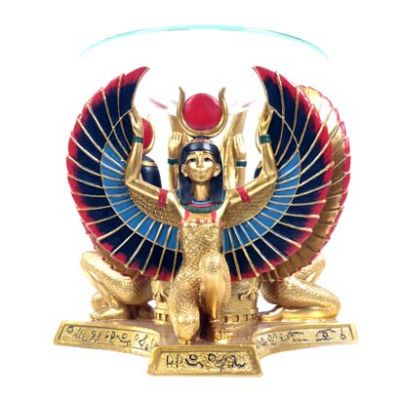 

DOMINGO=PRIMER DIA
LUNES=SEGUNDO DIA
MARTES=TERCER DIA
MARCOS/MARTE/MARTILLO
JUAN MARCOS ES EL HIJO DE MAGDALENA Y CRISTO=HECHOS 12:12
La referencia a Pedro/Piedra en Mateo 16:18 tambien es una referencia a PETRA/EDOM en un contexto a la CIUDAD DE LA ROSA/LUNA CRECIENTE. EDOM ES SINONIMO DEL COLOR ROJO EN LA TORA.
El Vaticano en su diseño en FUNCION A LAS PLEYADES/TAURO es un OBVIO NEXO CON LA LUNA CRECIENTE ya que los cuernos del TORO tambien son una referencia a la MISMA.
Haz hecho público que te gusta. Deshacer
www.mitos.co/lugares-interesantes/110-petraEn caché
Haz hecho público que te gusta. Deshacer
visitandoelmundo.org/petra-ciudad-con-historia/En caché
Haz hecho público que te gusta. Deshacer
tiempolibreyturismo.blogspot.com/.../petra-en-jordania.html - EspañaEn caché
Haz hecho público que te gusta. Deshacer
mogolik.mforos.com/459625/3828152-donde-queda/En caché
Haz hecho público que te gusta. Deshacer7 entradas - 1 autor - 10 Nov 2005
... libro del doc jones lo localizaba, eraen el valle de la luna creciente. ... Es Petra . Capital de los nabateos (s. vi a. J. C.) Está situada entre el ...
Haz hecho público que te gusta. Deshacer
www.pagina12.com.ar/diario/suplementos/.../9-1501-2009-03-15.ht...
Haz hecho público que te gusta. Deshacer
www.joaconde.net/viajes/jordania/petra.htmEn caché
Haz hecho público que te gusta. Deshacer
|
|
|
|
 Primer Primer
 Anterior
3 a 17 de 122
Següent Anterior
3 a 17 de 122
Següent Darrer
Darrer
|













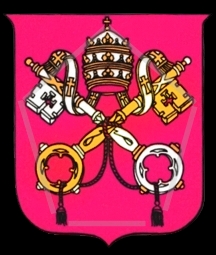

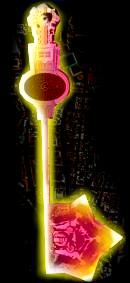
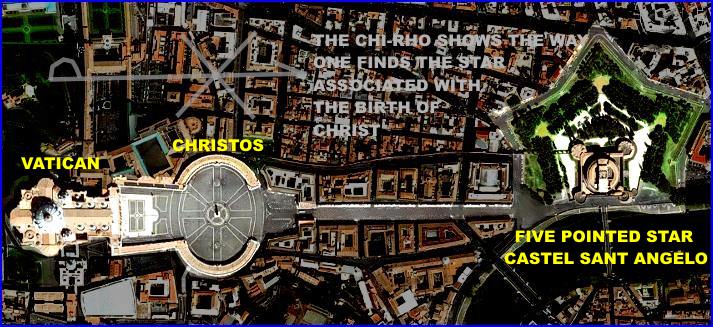













 Una gran mayoría de los templos islámicos tienen una inmensa cúpula o domo pintado de amarillo-luna, tratando de reflejar la relación intrínseca existente entre el dios de la tribu de Mahoma, de su esposa, de su padre, de sus tíos, etc. y el Islam, la religión fundada por él.
Una gran mayoría de los templos islámicos tienen una inmensa cúpula o domo pintado de amarillo-luna, tratando de reflejar la relación intrínseca existente entre el dios de la tribu de Mahoma, de su esposa, de su padre, de sus tíos, etc. y el Islam, la religión fundada por él.








